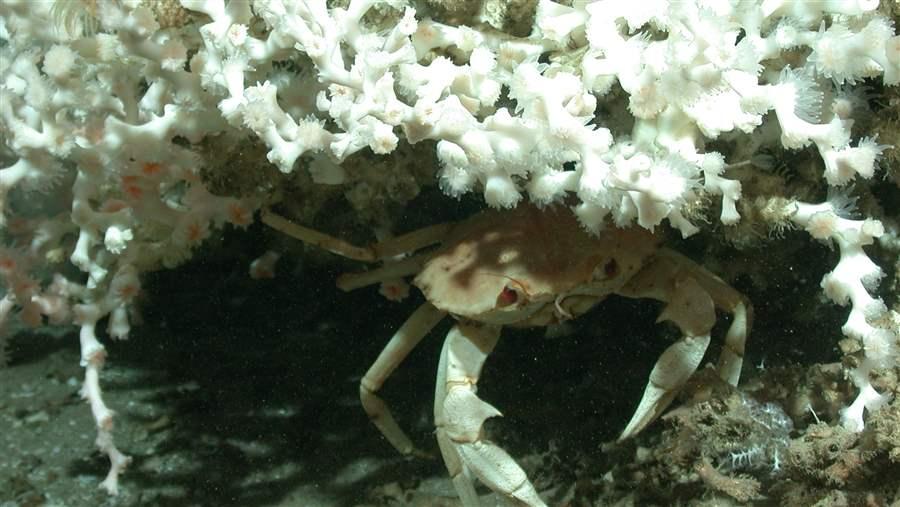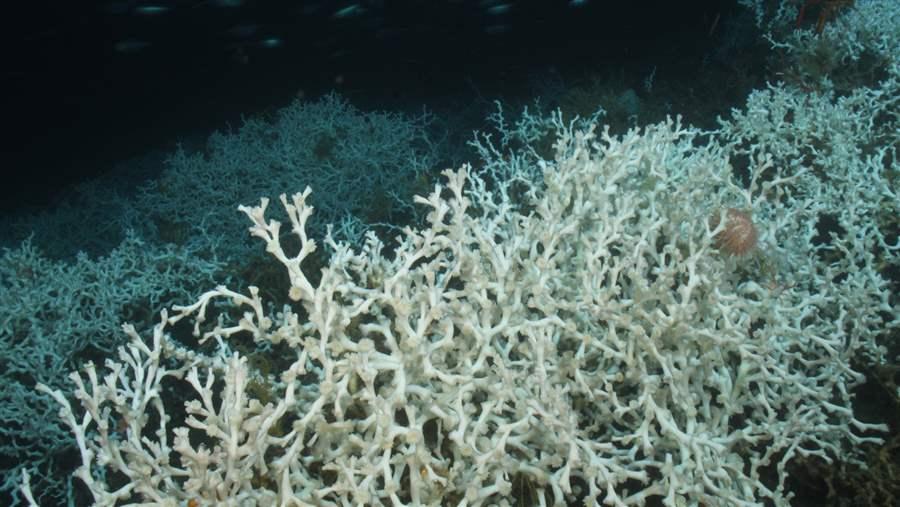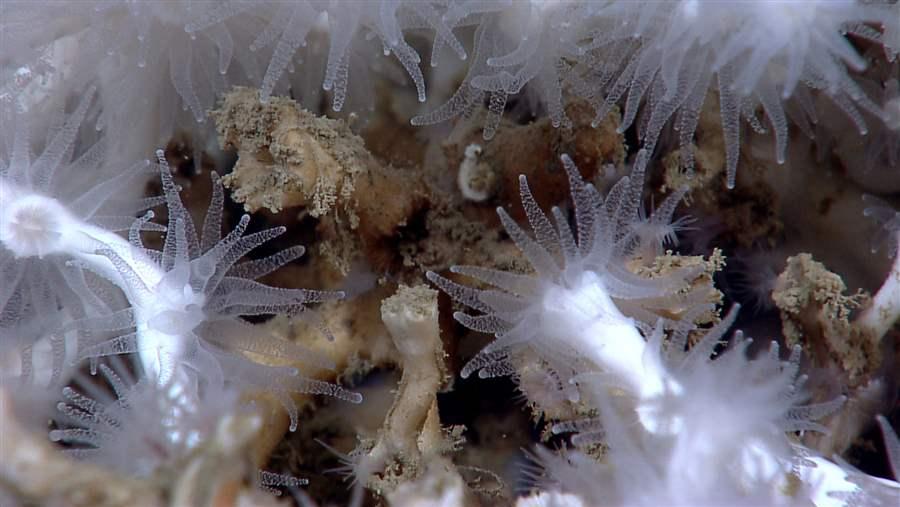Corals Up Close: How One Deep-Water Species Builds Reefs
The massive structures, vital to ocean health, can take millennia to grow

A golden crab finds shelter under Lophelia coral in the eastern Gulf of Mexico.
USGS Diversity, Systematics, and Connectivity of Vulnerable Reef Ecosystems (Discovre) Program 2010Deep-water corals, which grow in the cold, dark depths of all the world’s seas, can live hundreds or even thousands of years. This is the first post in our Corals Up Close series. We urge readers to submit comments to the Gulf of Mexico Fishery Management Council in favor of protecting these ancient animals.
Stony corals are the underwater reef builders of the world, but don’t wait around to watch them work.
It can take thousands of years for the corals to grow into massive reefs, which may weigh up to several tons. And it all starts with a larva no bigger than a grain of sand.
The larva settles on a hard surface, turns into a polyp, and secretes calcium carbonate to form a skeleton. Each polyp can reproduce on its own in numerous ways: budding, in which the polyp produces a genetically identical polyp (this is how the coral colony grows); fragmenting, in which a cluster of polyps breaks off and forms another colony; or spawning, where released eggs or sperm are fertilized by another colony. The spawned larvae are genetically different from their parents, can swim to colonize new habitat, and help maintain reef genetic diversity and resiliency.
Stony coral is the only deep-sea coral that forms reefs. The most famous type of reef-building stony coral is Lophelia pertusa, which forms mounds that can grow to more than 100 feet high over tens of thousands of years.
When stony corals get hungry, they thrust out tentacles laced with poison to stun prey and then snatch it into their mouths. Over time, the ever-expanding yet fragile reefs play host to hundreds of marine species, including fish, crabs, starfish, squat lobsters, and sharks.

Large swales of Lophelia pertusa coral rest about 1,500 feet underwater in the Gulf of Mexico on Robert’s Reef in the Viosca Knolls region offshore Louisiana.
NOAAThese ancient corals in the Gulf of Mexico face modern threats, mainly from fishing gear such as trawls, traps, longlines, and anchors, but also from energy development and changing ocean conditions. Gulf fishery managers are considering a proposal to safeguard coral hotspots by restricting the use of such gear in up to 23 sites that scientists have deemed high priority for protection.
Conserving deep-water corals protects marine habitat that is critical to keeping our oceans healthy. To learn more, watch the Pew video and sign our action alert.
Holly Binns directs The Pew Charitable Trusts’ efforts to protect ocean life in the Gulf of Mexico, the U.S. South Atlantic Ocean, and the U.S. Caribbean.


This video is hosted by YouTube. In order to view it, you must consent to the use of “Marketing Cookies” by updating your preferences in the Cookie Settings link below. View on YouTube
This video is hosted by YouTube. In order to view it, you must consent to the use of “Marketing Cookies” by updating your preferences in the Cookie Settings link below. View on YouTube


Ancient Corals Need Protection From Modern Threats
Deep-sea communities face risks from industrial activity, fishing, and ocean warming and acidification
Learn More







